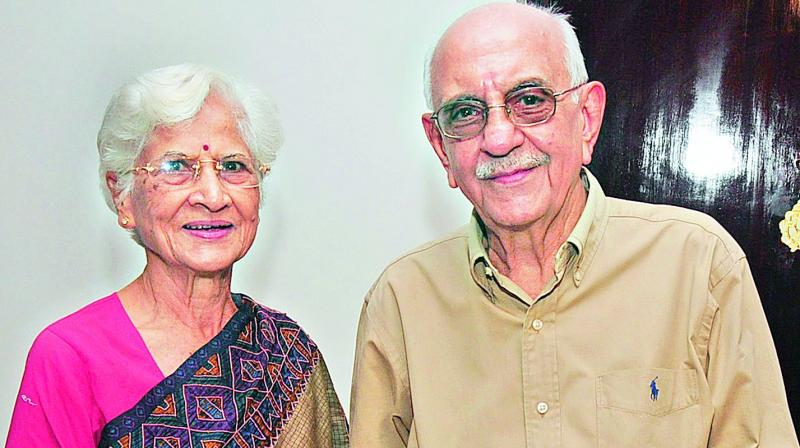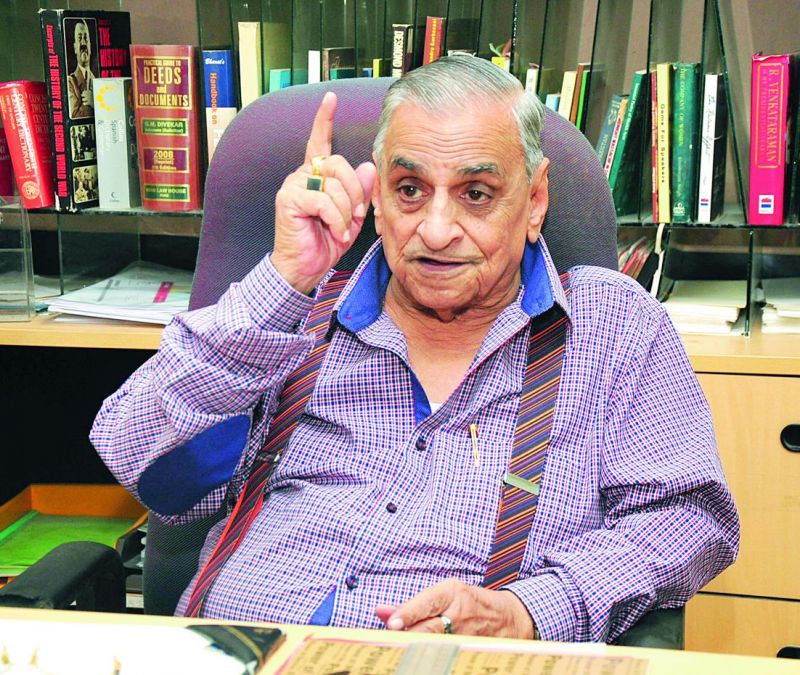Partition wounds are still fresh
83-year-old recalls incidents of killings, loot.

Hyderabad: “They would have butchered us if we had stayed back,” recalls 83-year-old Gurucharan Bhavanani, one of the oldest surviving members of the Sindhi community that came from Quetta in Balochistan to Hyderabad, when their hometown became part of Pakistan.
Now chairman of Sadhuram Hospital, Mr Bhavanani lives in Banjara Hills. He was just 13 years old when he saw the horrors that accompanied the Partition of India 70 years ago, causing one of the biggest refugee migrations in history.
Several families from Sindh, Balochistan and Punjab provinces migrated to Hyderabad when these provinces were divided or ceased to exist. Most of them were Sindhis who settled in Sindhi Colony in the backwaters of Hussainsagar.
Mr Bhavanani recalls that in that awful August of 1947, arson and looting was “the order of the day”.
“As violence broke out, many of us left Balochistan. There was indiscriminate stabbing. A majority of the refugees travelled by overloaded trains, but we were able to fly to Karachi and from there to India. There was violence and mass killings on both sides,” he says.
 Dayal Chimnani, chairman of Bottles and Chimney
Dayal Chimnani, chairman of Bottles and Chimney
Muslims helped many escape
It was Muslim friends who helped many people escape to India, he says. “Before Partition all of us lived in peace and suddenly things changed and we saw killings in front of our eyes.” He recounts the plight of being a refugee, without property or a home.
“We came to Wellington near Ooty in Tamil Nadu. We had lost all our properties and were homeless. We had to re-establish ourselves. We worked hard and developed our business. After police action in Nizam’s Hyderabad, we moved to the city. My father was an army contractor. Initially we were into automobile and then into garment export business in Delhi. My wife’s family that owned Gulchand and Company were living in Delhi from 1943, prior to Partition.”
There are around 35,000 Sindhis living in Hyderabad today, originally from Sindh now in Pakistan. Most of them are born here after Partition.
Dayal Chimnani, who lives in Sindhi Colony and is the chairman of Bottles and Chimney, is now 85-years-old. He remembers every moment of his flight to Hyderabad in September 1947.
“I was 15 years old and was in school in Karachi. We received sweets to mark Pakistan’s independence. Initially, after Partition, Sindh was quiet compared to Punjab and Bengal, which were largely affected by riots. An Urdu newspaper called Al-waheed, published from Sindh, ran a story with the caption: ‘Slaughtering of Muslims in Bihar-Happiness in Sindhi Hindus.’ This provoked the rioting in Sindh.
“The rioting broke out a few days later in September. When we came back to our house situated on Bunder Road (now called Mohammed Ali Jinnah Road) in Karachi, we found a notice put up by the Pakistan government that said it is assumed that we are migrating to India and the property has been allotted to a Muslim refugee from Uttar Pradesh.
“Panic struck us and we immediately boarded a ship to Mumbai from Karachi. We were put in a camp in Devlali.”
The women sold their jewellery and small businesses were started. “Initially, there were only a few Sindhi families in Hyderabad during the Nizam's regime. We grew in numbers later. We were into banking, film distribution, electronics, textiles and other business. When we boarded the ship along with 300 other refugees, we didn’t know what would be our fate,” says Mr Chimnani.
The family that owns Karachi Bakery also migrated from Sindh.

